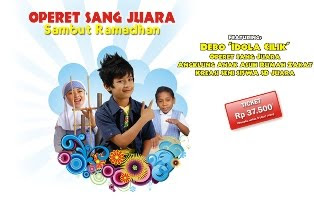My Indonesia
Indonesia, the largest archipelago and the fifth most populous nation in the world, has a total of 17,508 islands, of which about 6,000 are inhabited. Indonesia extends 3,198 miles (5,150km) between the Australian and Asian continental mainland and divides the Pacific and Indian Oceans at the Equator. With a total land area of 767,777 square miles (1,919,443 sq. km), its 190 million inhabitants are made up of 300 ethnic groups who speak an estimated 583 different languages and dialects. There are five main islands in Indonesia. These are: Java, Sumatra, Kalimantan, Sulawesi and Irian Jaya.
Across its many islands, Indonesia consists of distinct ethnic, linguistic, and religious groups. The Javanese are the largest and most politically dominant ethnic group. Indonesia has developed a shared identity defined by a national language, ethnic diversity, religious pluralism within a majority Muslim population, and a history of colonialism and rebellion against it. Indonesia's national motto, "Bhinneka Tunggal Ika" ("Unity in Diversity" literally, "many, yet one"), articulates the diversity that shapes the country. However, sectarian tensions and separatism have led to violent confrontations that have undermined political and economic stability. Despite its large population and densely populated regions, Indonesia has vast areas of wilderness that support the world's second highest level of biodiversity. The country is richly endowed with natural resources, yet poverty is a defining feature of contemporary Indonesia.
Across its many islands, Indonesia consists of distinct ethnic, linguistic, and religious groups. The Javanese are the largest and most politically dominant ethnic group. Indonesia has developed a shared identity defined by a national language, ethnic diversity, religious pluralism within a majority Muslim population, and a history of colonialism and rebellion against it. Indonesia's national motto, "Bhinneka Tunggal Ika" ("Unity in Diversity" literally, "many, yet one"), articulates the diversity that shapes the country. However, sectarian tensions and separatism have led to violent confrontations that have undermined political and economic stability. Despite its large population and densely populated regions, Indonesia has vast areas of wilderness that support the world's second highest level of biodiversity. The country is richly endowed with natural resources, yet poverty is a defining feature of contemporary Indonesia.
Thursday, July 23, 2009
Mud Cakes
(Kue Lumpur)
(Kue Lumpur)

Ingredients:
* 75 gram margarine/butter
* 250 ml water
* 150 gram flour, sifted
* 100 gram sugar
* ¼ tsp. salt
* 1 tsp. vanilla
* 6 eggs
* 450 ml thick santan from 1 coconut
* 100 gram raisins
* ½ of a young coconut, the flesh scraped out in thin slivers

Instructions:
* Melt the margarine/butter in the water, add the flour and blend it until smooth. Add the sugar, salt and vanilla. When the batter is well blended, take off the fire and cool down.
* Break the eggs one by one into the batter, beating well after each addition. Add the santan (coconut milk) little by little and beat until batter is smooth.
* Heat the mud cake molds, oil them and fill them ¾ full. Cover with their heated kuds and cook until they are half done. Open the lids and cook until they are half done. Open the lids and scatter a few raisins and coconut slivers on top.
* Cover again and continue cooking for about 5 minutes. Unmold and serve
Makes 26 cakes
Labels: Traditional Dessert
0 Comments:
Subscribe to:
Post Comments (Atom)



,+Jakarta.jpg)




Post a Comment